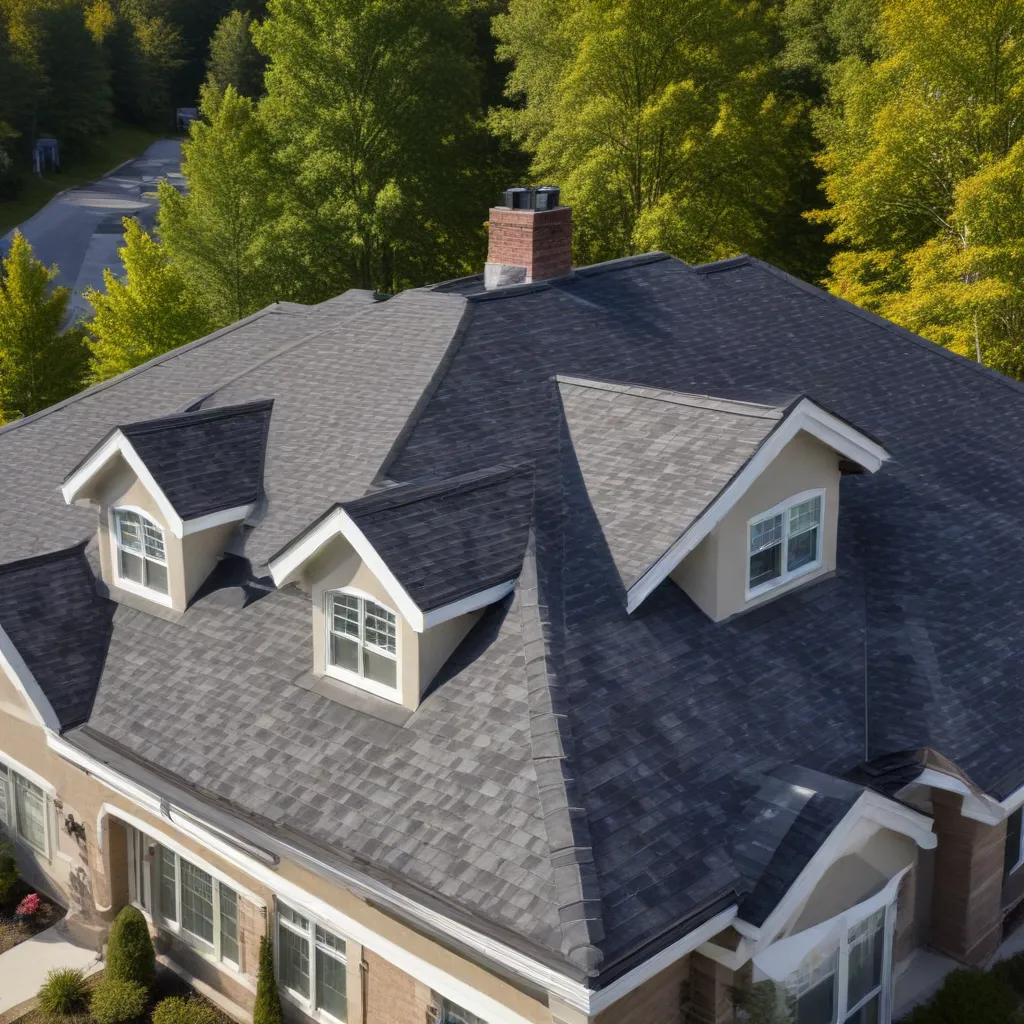
As a seasoned roofing specialist, I understand the vital role that energy-efficient roofing plays in enhancing a home’s performance and reducing its environmental impact. Roofing systems have evolved significantly, offering homeowners a wide array of options to optimize their homes’ energy efficiency, comfort, and long-term cost savings.
Energy-Efficient Roofing Materials
Achieving energy efficiency starts with the right roofing materials. Reflective roofing, insulated roofing, and green roofing systems are three standout categories that can dramatically improve a home’s thermal performance.
Reflective Roofing
Reflective roofing materials, such as metal roofs and light-colored asphalt shingles, are designed to reflect a significant portion of the sun’s radiation away from the home. This minimizes heat absorption and reduces the workload on cooling systems, leading to substantial energy savings, especially during the hot summer months.
Insulated Roofing
Insulated roofing systems, including structural insulated panels (SIPs) and spray foam insulation, provide superior thermal resistance, preventing heat transfer and maintaining a comfortable indoor environment year-round. By limiting heat loss in the winter and heat gain in the summer, these advanced insulation solutions can dramatically improve a home’s energy efficiency.
Green Roofing
Green roofing, or vegetated roof systems, offer a unique approach to energy efficiency. These roofs feature a layer of living vegetation that helps insulate the building, reducing heating and cooling demands. Additionally, the plants can absorb and filter stormwater, contributing to a more sustainable and eco-friendly home environment.
The key properties that distinguish energy-efficient roofing materials are their solar reflectance (the ability to reflect sunlight), thermal emissivity (the ability to emit absorbed heat), and insulation value (the resistance to heat transfer). By carefully selecting roofing materials with optimal performance in these areas, homeowners can maximize their homes’ energy efficiency.
Benefits of Energy-Efficient Roofing
The advantages of incorporating energy-efficient roofing into a home extend far beyond cost savings. These solutions provide a multitude of benefits that positively impact both the homeowner and the environment.
Reduced Energy Costs
One of the primary benefits of energy-efficient roofing is its ability to reduce heating and cooling costs. Reflective roofing can significantly lower a home’s cooling load, as it reflects a significant portion of the sun’s radiant heat, mitigating the need for air conditioning. Conversely, insulated roofing helps maintain a comfortable indoor temperature, reducing the energy required for heating during the colder months. These savings can translate to substantial reductions in monthly utility bills.
Environmental Impact
Energy-efficient roofing also contributes to a more sustainable future by decreasing a home’s environmental footprint. Reduced energy consumption leads to lower greenhouse gas emissions, making these roofing solutions a valuable asset in the fight against climate change. Additionally, some green roofing systems can even help improve air quality and manage stormwater runoff, further enhancing the environmental benefits.
Increased Home Comfort
Beyond the financial and environmental advantages, energy-efficient roofing can also improve the overall comfort and well-being of a home’s occupants. By effectively regulating indoor temperatures and humidity levels, these roofing systems create a more consistent and comfortable living environment, enhancing the overall quality of life for the homeowners.
Roof Design Considerations
Maximizing the energy efficiency of a roofing system requires a holistic approach that considers various design elements. Factors such as roof orientation, slope, ventilation, and structural integrity all play a crucial role in achieving optimal performance.
Roof Orientation and Slope
The orientation and slope of a roof can significantly impact its ability to harness or deflect the sun’s energy. Strategically positioning the roof to maximize exposure to or shield from sunlight can enhance the effectiveness of reflective or insulated roofing materials, respectively. Additionally, proper roof slope ensures efficient rainwater management and helps prevent moisture-related issues.
Ventilation and Airflow
Maintaining proper attic ventilation is essential for energy-efficient roofing. Adequate airflow helps regulate temperature and humidity levels, reducing the strain on heating and cooling systems. This can be achieved through the installation of roof vents, soffit vents, and other ventilation systems that work in tandem with the roofing materials.
Roof Structure and Framing
The underlying roof structure and framing must be designed to support the weight and performance requirements of energy-efficient roofing systems. Factors such as load-bearing capacity and structural integrity ensure the long-term viability and effectiveness of these roofing solutions.
Homeowner Incentives and Regulations
Governments and utility providers have recognized the importance of energy-efficient roofing and have implemented various incentives and regulations to encourage homeowners to adopt these sustainable practices.
Government Rebates and Incentives
Many local, state, and federal governments offer tax credits, rebates, and other financial incentives to homeowners who choose to install energy-efficient roofing systems. These programs are designed to offset the initial investment and make energy-efficient roofing a more accessible and attractive option for homeowners.
Building Codes and Standards
Building codes and sustainability standards, such as those set by the International Energy Conservation Code (IECC), often mandate minimum energy efficiency requirements for roofing systems. Compliance with these regulations ensures that new construction and roof replacements contribute to the overall energy efficiency and environmental responsibility of the built environment.
By understanding the diverse array of energy-efficient roofing materials, the associated benefits, and the various design considerations, homeowners can make informed decisions that not only enhance the comfort and longevity of their homes but also positively impact the environment and their wallets. With the right roofing solution and a commitment to energy-efficient practices, homeowners can unlock the full potential of their homes and contribute to a more sustainable future.

























